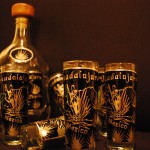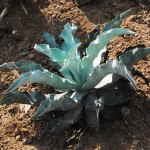Hi, I’m Joaquin and I will be writing a sporadic column on life from the Mexican state of Jalisco.
The thing about Tequila is that we all know what it is: it’s available at any bar/nightclub/pub in England, you get the salt and lemon, dab the salt on your hand, take the shot, bite into the lemon and then feel atrocious the next day. If you’re feeling really adventurous you might even ask for a ‘worm’ to be incorporated into the mix. It’s all pretty simple right?
Wrong.
In reality, much of the standard Englishman’s knowledge of Tequila is completely wide of the mark. Aside from other Anglicised assumptions surrounding Mexico – such as sizeable sombreros (rare), salt and lemon condiments at almost every turn (rare), and questionable moustaches (not so rare) – I have discovered whilst over here that the myths surrounding Tequila that are widely regarded as facts in England are nearly almost always bullshit!
Below I have provided a few amendments to the most popular ‘facts’ about Tequila in order to dazzle and amaze your audiences or to simply shut some other know-it-all up next time you’re out at your local Walkabout:
José Cuervo
Like so many of us the Tequila I have been used to over the last few years in England has been José Cuervo branded — or depending on the establishment perhaps more commonly that famous brand ‘unknown’ – and taken almost inevitably in shot form. Now, hold on to your sombreros for this one but believe it or not José Cuervo is not, I repeat NOT, the be all and end all of Tequila types! In fact, the most celebrated type of Tequila in Mexico is known as Herradura (or Horseshoe in English). A little bit of extra padding for this statement: the original factory dates back to 1870 but was closed in 1963 – it can still be viewed today though and for the more adventurous of stag weekends is also available for events!!!
Tequila Slammers
I am yet to have witnessed a Tequila Suicide — snort the salt and use the lemon as eye drops, come on MexicLADS! — in Mexico. I’m not too sure the idea would be as attractive to Mexicans as it is to the wealth of English LADS we have meandering through various city centres at all hours searching for casinos. However, Tequila Slammers are somewhat more popular. They are generally taken before a meal or as an accompaniment for the duration and are supposed to be sipped not downed!

Tequila Territory
Here is a real gem for those serious about divulging useless knowledge a nd information to their inferiors: within Mexico there are similar laws governing the production of Tequila as there are for champagne in France. As far as I am aware a bottle can only legitimately be labelled champagne if all the grapes are grown in Champagne, France. In much the same fashion a bottle can only be called Tequila if the extracts from the agave cores come from a choice of 5 states in Mexico: Jalisco (represent!); Guanajuato; Michoacan; Nayarit or Tamaulipas. Additional requirements are that the alcohol volume can be no less than 35% and the label reads Hecho en México.
nd information to their inferiors: within Mexico there are similar laws governing the production of Tequila as there are for champagne in France. As far as I am aware a bottle can only legitimately be labelled champagne if all the grapes are grown in Champagne, France. In much the same fashion a bottle can only be called Tequila if the extracts from the agave cores come from a choice of 5 states in Mexico: Jalisco (represent!); Guanajuato; Michoacan; Nayarit or Tamaulipas. Additional requirements are that the alcohol volume can be no less than 35% and the label reads Hecho en México.
Gusano
Lastly, and my personal favourite misconception, is that ‘good’ or ‘authentic’ Tequila will have a worm in it – or, if coming from the mouth of a more haughty Tequila connoisseur/the former captain of your school rugby team – “gusano” in it. THIS IS A LIE. If anyone attempts to pass this off as true PLEASE instantly and aggressively correct him. The idea of a worm in the tequila is a marketing ploy that – you may want to kindly point out – the knob head you are addressing has naively bought into and attempted to pass off as fact!
So there you are. You are now semi-equipped so that the next time you’re challenged with a line of Tequila slammers you will be able to whimsically and effortlessly impress the ragged collection of LADS with whom you are out on the lash at your local Walkabout! Conversely, you may wish to discard all the above information and simply down the shots that have been placed in front of you. No one likes a know-it-all or is likely to remember what you said in the morning anyway…
Salud!

















